Agostino Silva came from Morbio Inferiore in what is now the Swiss canton of Ticino. He trained as an architect and sculptor under his father, Francesco, before further training in Rome. His speciality was sculptural decoration in stucco, which was particularly useful in the redecoration of churches in line with the reforms made at he Council of Trent.
Assisi
Work in San Rufino
Agostino Silva was involved in an extensive project that Bishop Ludovico Giustiniani (1670-85) initiated in order to impose a sense of order on the decoration of the altars of San Rufino.
Altare di San Filippo Benizi
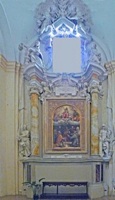
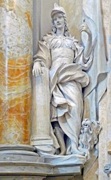
Bishop Ludovico Giustiniani commissioned this altar in 1672 in order to house a relic of the newly-canonised Servite St Philip Benizi. It is decorated with stucco figures of:
-
✴two flying angels holding the arms of Bishop Giustiniani; and
-
✴the four Cardinal Virtues, one of which, the figure of Fortitude (illustrated here), is signed by Agostino Silva and dated 1672.
Altare del Crocifisso
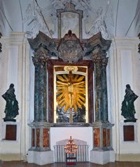
Altare della Immacolata Concezione
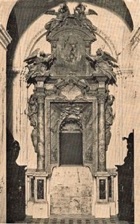
Figures from the Old Testament (ca. 1672)
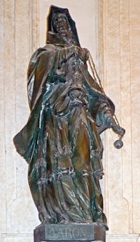
Spello
Stucco Altars (ca. 1670)
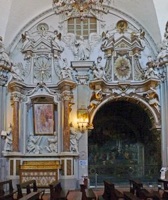
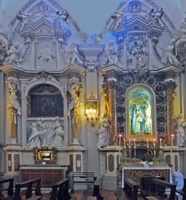
Altare di San Giuseppe and Altare di San Felice and
entrance wall of Cappella Bella Altare della Madonna del Rosario
An inscription on the choir on the counter-façade of Santa Maria Maggiore records that Cardinal Bishop Cesare Facchinetti of Spoleto commissioned the re-decoration of the church in 1670. The design for this project, which probably involved the stucco decoration of almost the whole of the interior, is attributed to Agostino Silva. Specific altars that are attributed to him include:
-
✴the Altare di San Giuseppe and the entrance wall of the Cappella Bella on the left;
-
✴the Altare di San Felice and the Altare della Madonna del Rosario on the right; and
-
✴two altars in the transepts:
-
•the Altare di San Gaetano di Thiene, on the left; and
-
•the Altare della Madonna di Loreto, on the right.
Stucco Altar (ca. 1670)
The stucco decoration of the Altare di San Lorenzo in San Lorenzo is attributed to Agostino Silva.



